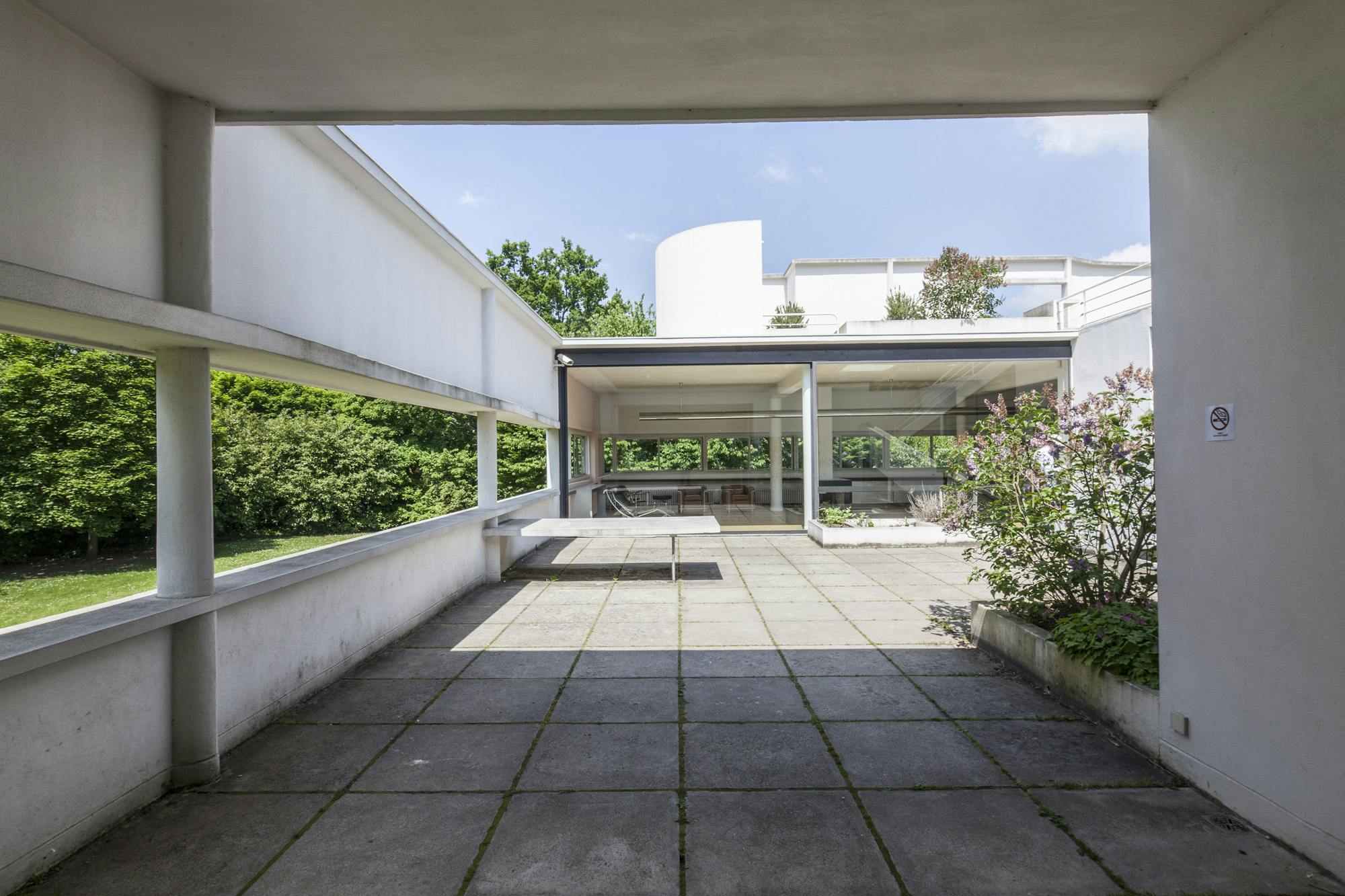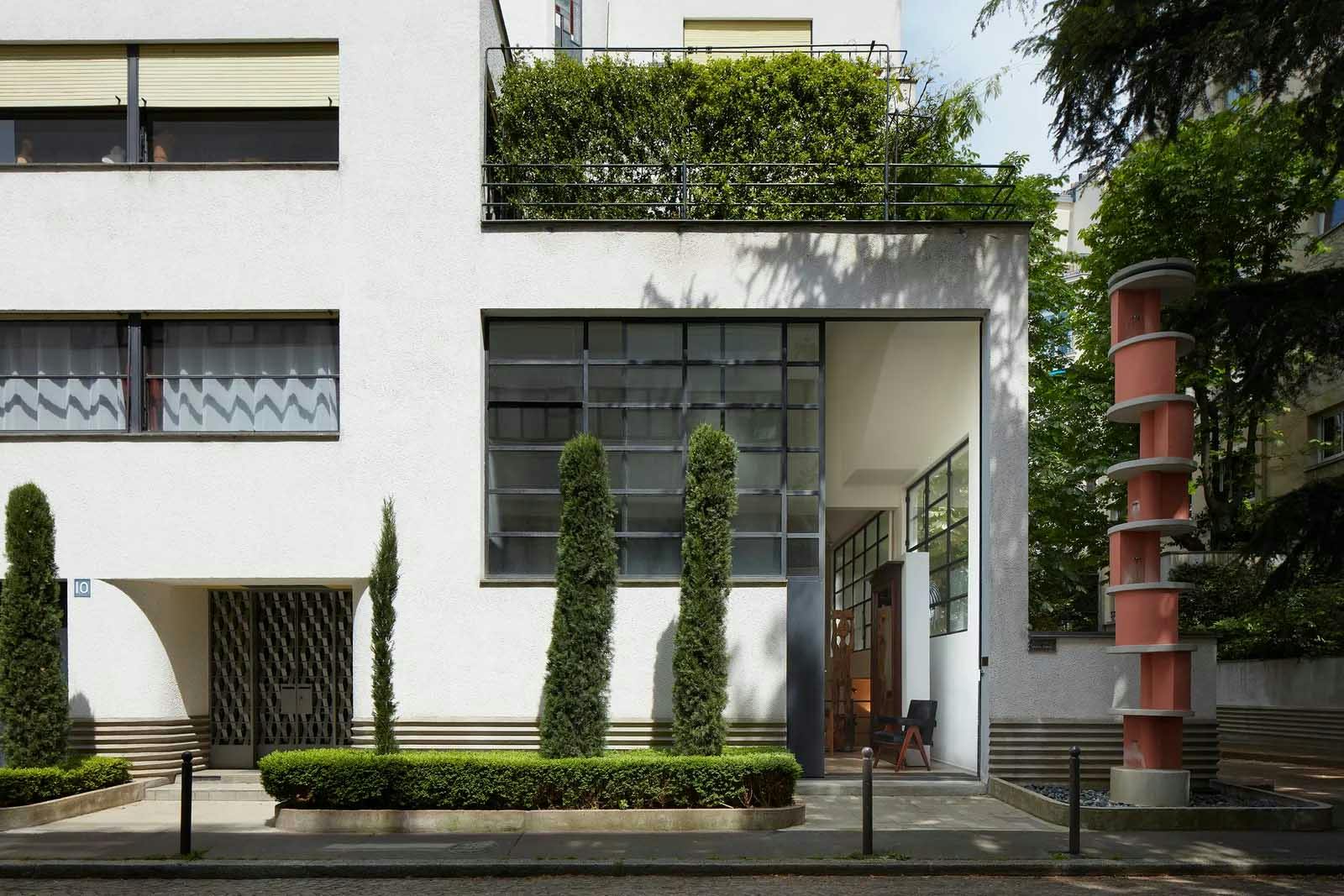
Villa Savoye
Villa Savoye by Le Corbusier was occupied twice during World War II, first by the Germans and then by the Americans, leading to significant damage and neglect. After the war, it fell into severe disrepair until restoration efforts began in the 1960s, culminating in its full restoration by 1997. Today, it stands as a UNESCO World Heritage site and a testament to modernist architecture.


Villa Savoye, a masterpiece of modern architecture completed in 1931, exemplifies Le Corbusier's pioneering vision of functionalism and aesthetics. Located in Poissy, on the outskirts of Paris is celebrated for its revolutionary design principles, including the use of pilotis to elevate the structure, an open floor plan that allows for flexible living spaces, horizontal windows that provide abundant natural light, a flat roof terrace for outdoor living, and a free façade liberated from structural constraints. These elements collectively illustrate Le Corbusier's Five Points of Architecture, which aimed to enhance living conditions through innovative spatial arrangements and harmonious integration with the surrounding environment.
The villa was occupied twice during World War II, first by the Germans and then by the Americans, who both used it for military purposes, leading to significant damage and neglect. After the war, the villa fell into severe disrepair until restoration efforts began in the 1960s, culminating in its full restoration by 1997. Today, it stands as a UNESCO World Heritage site and a testament to modernist architecture.













